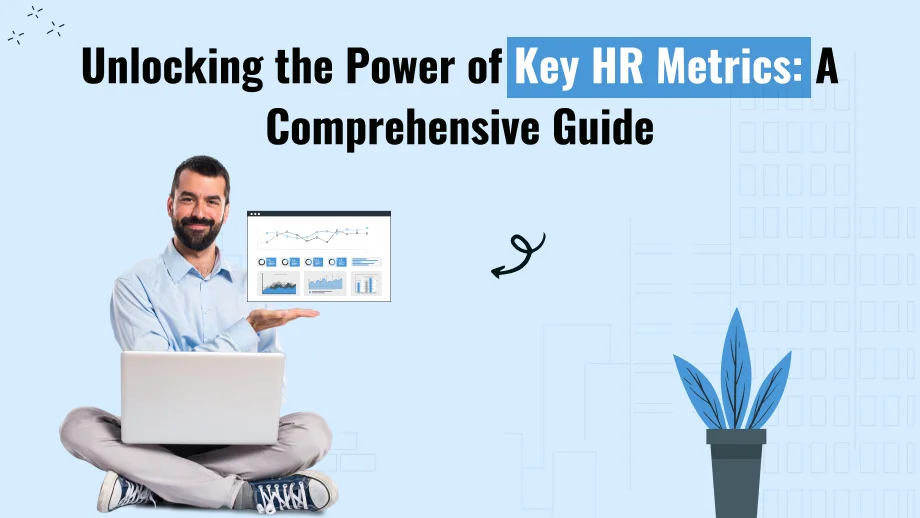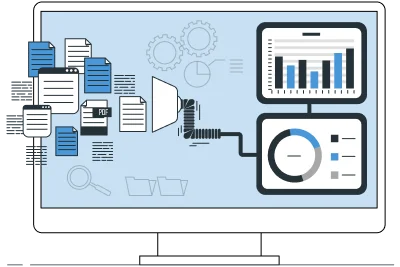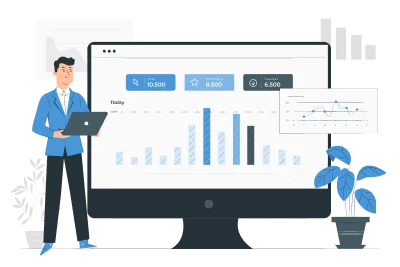Grab a chance to avail 6 Months of Performance Module for FREE
Book a free demo session & learn more about it!
-
Will customized solution for your needs
-
Empowering users with user-friendly features
-
Driving success across diverse industries, everywhere.
Grab a chance to avail 6 Months of Performance Module for FREE
Book a free demo session & learn more about it!
Superworks
Modern HR Workplace
Your Partner in the entire Employee Life Cycle
From recruitment to retirement manage every stage of employee lifecycle with ease.


Seamless onboarding & offboarding
Automated compliance & payroll
Track performance & engagement
Unlocking the Power of Key HR Metrics: A Comprehensive Guide
- Superworks
- 9 min read
- November 20, 2023

In the world of Human Resource Management (HRM), the phrase “knowledge is power” couldn’t be more accurate. As organizations grow and adapt to changing environments, understanding and measuring HR performance becomes essential.
This is where HR metrics come into play. In this blog, we’ll dive into the world of HR metrics, explaining their importance, how to measure HR performance and their role in today’s HR landscape.
We’ll also explore the use of HR Toolkit, HRMS software and conclude with a case study highlighting the effectiveness of HR metrics through Superworks.
- What Is The Importance of HR Metrics?
- Here’s why HR metrics are crucial:
- How to Measure HR Performance?
- What Are The Key Metrics for HR Analytics?
- The HR Toolkit: Enhancing HR Performance
- Leveraging HR Management Software for Metrics
- HRMS Software in India: A Growing Trend
- Human Resource Management and HR Metrics
- Superworks: A Case Study in HR Metrics
- Conclusion:
What Is The Importance of HR Metrics?
HR metrics are the data-driven backbone of effective HR management. They provide insights into various aspects of an organization’s workforce, allowing HR professionals and leaders to make informed decisions.
Here’s why HR metrics are crucial:
-
Data-Driven Decision Making: Metrics enable HR teams to base their decisions on real data, rather than intuition. This leads to more accurate and strategic human resource management choices.
-
Performance Evaluation: Metrics help in evaluating HR department performance and identifying areas that need improvement. This continuous feedback loop ensures ongoing growth.
-
Resource Allocation: With HR metrics, organizations can allocate their resources, including budget and staff, more efficiently. They can identify where investment is needed and where it might be excessive.
-
Compliance and Risk Management: Metrics help in tracking compliance with labor laws and regulations, reducing the risk of legal issues and associated costs.
Enhanced Employee Experience: By measuring employee satisfaction, engagement, and retention, HR can create a better work environment, boosting overall employee experience.
How to Measure HR Performance?
Measuring HR performance involves tracking and analyzing various aspects of HR activities. Here are some key steps and metrics:
-
Define Clear Objectives: Start by setting clear objectives for your HR department. What do you want to achieve? Whether it’s reducing turnover, improving recruitment, or enhancing employee engagement, define your goals.
-
Select Relevant Metrics: Choose metrics that align with your objectives. For instance, if your goal is to reduce turnover, you might track turnover rate, exit interviews, and employee satisfaction.
-
Collect Data: Gather data from various sources, such as surveys, automated software, and performance evaluations. Ensure data accuracy and consistency.
-
Analyze Data: Use analytics tools to process and interpret the collected data. Identify trends, patterns, and areas that need attention.
-
Report and Communicate: Share your findings with relevant stakeholders, including senior management. Effective communication is key to driving change.
-
Implement Changes: Based on your analysis, implement strategies and initiatives to improve HR performance. Monitor progress regularly.
-
Evaluate Impact: Continuously assess the impact of your initiatives by revisiting your metrics. Adjust your strategies as needed.
What Are The Key Metrics for HR Analytics?
Now, let’s delve into some key HR metrics that organizations commonly use for HR analytics:
-
Employee Turnover Rate: This metric measures the percentage of employees who leave the organization over a specific period. High turnover can indicate issues with recruitment, retention, or workplace culture.
-
Time to Fill: It quantifies the time taken to fill open positions. A lengthy time to fill can hinder productivity and impact the organization’s ability to respond to market changes.
-
Cost per Hire: Calculating the total cost incurred to hire a new employee, including recruitment, training, and onboarding expenses, helps in optimizing recruitment processes.
-
Employee Engagement: This metric assesses employees’ commitment to their work and the organization. Higher engagement often leads to improved productivity and reduced turnover.
-
Absenteeism Rate: Measuring the frequency and duration of employee absences can highlight potential issues in work-life balance or workplace wellness.
-
Training and Development ROI: Evaluating the return on investment for training and development programs helps in optimizing learning initiatives.
-
Performance Appraisal Ratings: Monitoring the distribution of performance ratings can identify potential biases or inconsistencies in the evaluation process.
-
Diversity and Inclusion Metrics: Tracking diversity metrics, such as gender and ethnicity representation, can help organizations promote diversity and inclusion.
The HR Toolkit: Enhancing HR Performance
To effectively measure HR performance and leverage key HR analytics metrics, HR professionals can benefit from the use of HR toolkits. These toolkits provide a comprehensive set of resources, templates, and guidelines to streamline HR processes and achieve better outcomes.
They include:
-
Job Descriptions: Clearly defined job descriptions help in attracting the right candidates and setting performance expectations.
-
Performance Management Tools: These tools aid in setting goals, conducting performance appraisals, and providing feedback to employees.
-
Recruitment and Onboarding Templates: Templates for job postings, interview guides, and onboarding checklists ensure a standardized and efficient hiring process.
-
Employee Handbook: An up-to-date handbook outlines company policies and expectations, promoting transparency and consistency.
-
Training and Development Resources: Resources for Human Resource Planning and implementing training programs, including e-learning modules and development plans.
-
Exit Interview Templates: Standardized exit interviews can provide valuable insights into reasons for turnover.
-
Compliance Checklists: Checklists to ensure compliance with labor laws and regulations, reducing legal risks.
-
Employee Surveys: Templates for surveys to gather feedback on employee satisfaction, engagement, and other important aspects of the workplace.
By utilizing an HR toolkit, HR professionals can streamline their processes, reduce administrative burdens, and focus on strategic initiatives that drive HR performance improvement.
Read more: Compliance Benefits of Using Payroll Services – Switch to Superworks!

Want HR metrics analytics? – Superworks is there!
Measure employees as well as all HR people by adopting key metrics of HR analytics with the advanced modules of Superworks.
OKR, KRP, and all things can be measured with performance management by HRMS software.
Leveraging HR Management Software for Metrics
In today’s digital age, HR professionals have a powerful ally in the form of Human Resource Management System (HRMS) software. These systems are designed to streamline HR processes, including the collection and analysis of HR metrics. Here’s how HRMS software India can aid in measuring HR performance:
-
Data Centralization: HR software gathers and stores HR-related data in one centralized location. This eliminates the need for manual data entry and reduces the risk of data errors.
-
Real-time Reporting: HR management software allows for real-time reporting and analytics. HR professionals can generate reports and dashboards to monitor key metrics instantly.
-
Automation: Many HRMS systems automate repetitive HR tasks, such as payroll processing and benefits administration, freeing up HR personnel to focus on strategic initiatives and metric analysis.
-
Employee Self-Service: HR system often includes self-service portals for employees, enabling them to update personal information, access pay stubs, and request time off. This reduces administrative tasks for HR.
-
Compliance Tracking: Human resource management software can help organizations stay compliant with labor laws and regulations by providing automated compliance checks and reporting.
-
Integration: Many HRMS systems can integrate with other software solutions, such as accounting and ERP systems, for seamless data sharing and analysis.
- The use of HR system software can significantly enhance an organization’s ability to measure HR performance and make data-driven decisions.
HRMS Software in India: A Growing Trend
In India, the adoption of HRMS software has been on the rise. Indian businesses, both large and small, are recognizing the value of digitizing HR processes and
leveraging HR metrics for better decision-making. Here are some reasons for the growing trend of HR management software in India:
-
Efficiency Gains: HR software streamlines time-consuming HR tasks, reducing administrative burdens and improving overall efficiency.
-
Compliance Management: Indian labor laws are complex, and HR management software helps organizations stay compliant by automating compliance checks and reporting.
-
Scalability: As Indian companies expand, this software provides the scalability needed to manage a growing workforce.
-
Data Security: HRMS systems typically offer robust security features to protect sensitive employee data, a critical concern for Indian businesses.
-
Competitive Advantage: By leveraging HRIS software and HR metrics, Indian companies can gain a competitive edge by making data-driven decisions and optimizing their HR strategies.
The adoption of software is expected to continue its upward trajectory as more organizations recognize its benefits in improving HR performance.
Human Resource Management and HR Metrics
Effective human resource management is intrinsically linked to HR metrics. HR professionals play a critical role in implementing and monitoring key metrics to drive organizational success. Some key aspects of HRM that benefit from HR metrics include:
-
Recruitment and Selection: Metrics help in evaluating the effectiveness of recruitment channels, candidate quality, and time to hire.
-
Performance Management: HR metrics enable the assessment of performance appraisal processes, identifying areas for improvement.
-
Employee Development: Metrics assist in tracking training and development initiatives, ensuring a return on investment.
-
Compensation and Benefits: HR professionals use metrics to determine the competitiveness of compensation packages and benefits.
-
Employee Engagement: Regular measurement of engagement metrics helps in implementing strategies to improve employee satisfaction and retention.
-
Succession Planning: Metrics aid in identifying potential successors for key positions within the organization.
Incorporating HR metrics into HRM practices enhances decision-making and fosters a data-driven culture within the HR department.
Superworks: A Case Study in HR Metrics
To illustrate the real-world impact of HR metrics, let’s take a look at a fictitious case study involving us, a growing tech company:
Background:
Superworks had been experiencing a high turnover rate, leading to disruptions in project timelines and increased recruitment costs.
HR Metrics Implemented:
-
Employee Turnover Rate
-
Exit Interview Analysis
-
Employee Engagement Score
Actions Taken:
Analysis: We conducted a thorough analysis of exit interview data, identifying common reasons for employee departures, including limited career growth opportunities and dissatisfaction with management.
Intervention: Based on the findings, we revamped its performance appraisal process, introduced clear career development paths, and provided management training to address leadership concerns.
Measurement: Over the next year, we continued to track the same HR metrics. The turnover rate decreased, exit interviews reflected more positive sentiments, and the employee engagement score improved.
Results:
-
Employee Turnover Rate reduced by 30%.
-
Exit interviews revealed a shift in feedback towards positive experiences.
-
Employee Engagement Score increased by 15 points.
Superworks’ strategic use of HR metrics resulted in a more stable workforce, reduced recruitment costs, and improved employee morale. This case study underscores the transformative power of HR metrics when applied effectively.
Also, See: A Guide For The Role Of HR Employee Engagement & Satisfaction
Conclusion:
In today’s dynamic business environment, HR metrics are essential tools for Human Resource Management. They enable organizations to make data-driven decisions, optimize HR processes, and enhance employee experiences.
From measuring employee turnover to leveraging HRMS software, HR professionals have a plethora of resources at their disposal to improve hr data analytics performance. The growing adoption of HRMS software in India highlights the increasing importance of digitizing HR processes and using metrics to gain a competitive advantage.
As illustrated by our case study, HR metrics are not just numbers; they represent tangible improvements in workforce stability and overall organizational success. Embrace the power of HR metrics, and you’ll find yourself equipped to navigate the challenges and opportunities of the ever-evolving HR landscape.







